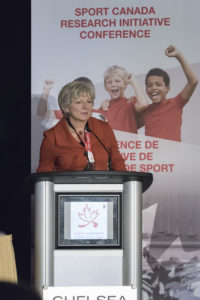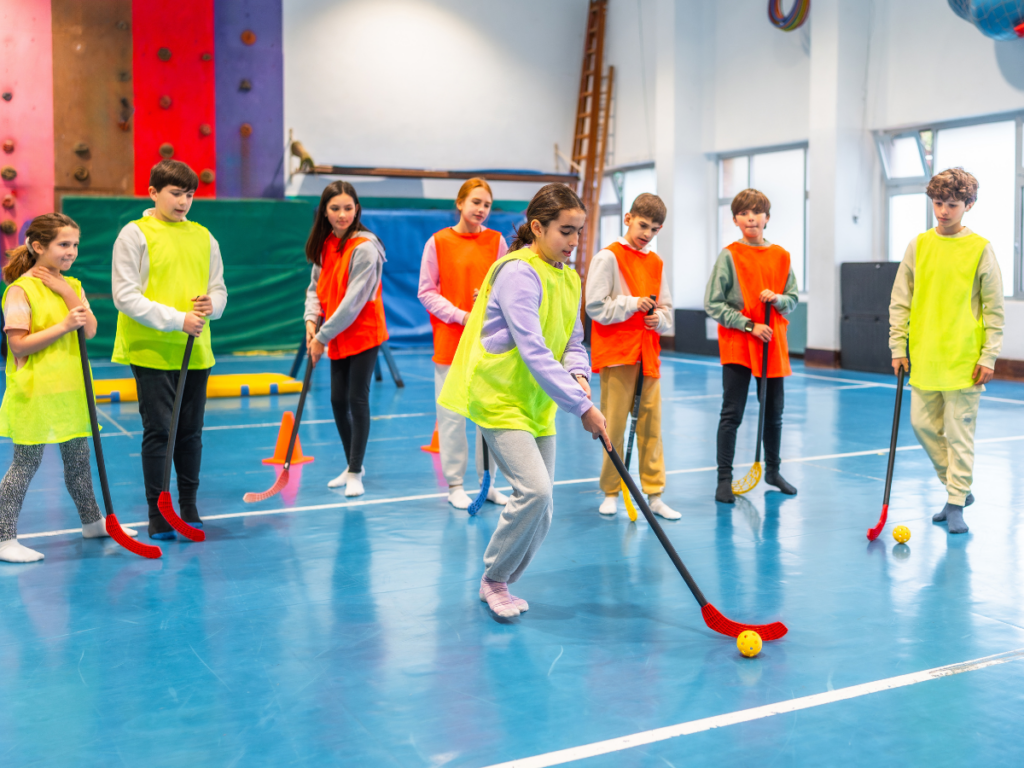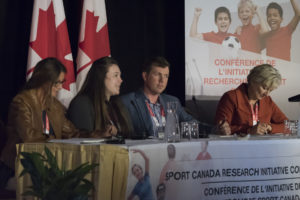
View the summary of this research here.
The purpose of the study was to engage rural preadolescent children in the development of research questions that are relevant and meaningful to exploring their participation and commitment to sport and other recreational activities. The three objectives were 1) To understand the children’s experience in participation of sport, 2) To discover from the children’s perspective, factors that should be incorporated into future research, and 3) To discover the most appropriate methods for engaging children in the research processes.

Research methods
Methods used in this qualitative study were focus group interviews with preadolescent children in two rural communities in Saskatchewan. Researchers worked with a small group of children from both communities to develop the interview questions for the study. Once the interview guide was developed, focus groups were conducted with groups of 6 to 8 children in each community. Following the analysis of the data, researchers returned to the communities to meet with the children to confirm the findings.
Research results
The children in this study were active and productive participants in the development of the data collection tool and in providing valuable data about their experiences in sport participation.
Children identified the following four areas that are important to explore: 1) motivation for participation, 2) feelings relating to participation, 3) the balance between sport participation and other aspects of their lives, and 4) the pathway to participation. In each area children expanded on further aspects to explore. In motivation, children suggested exploring enjoyment, health benefits, the challenge of the activity, and the social aspect. In the feelings component children suggested exploring feelings generated by external (people, social media, pets, and the rural environment) and internal influences. (personality and confidence, skills, and abilities). An exploration of the “right” balance between sport participation and other aspects of life, such as family and personal time was considered important. The last component related to the path to participation or what steps children take that ultimately result in participation.
In the next phase of the study children responded to questions related to the above four areas Children reported that having fun and feeling happy was a strong motivation in beginning and remaining in a sport activity. Many children felt that having fun was more important than winning. An important aspect of motivation and one that contributed to the fun was being with friends. A few children commented on how you felt good when you participated in the sport and that meant you were healthy. Having pets and living in a rural environment was described as an advantage to their ability to be active.

Children expressed positive and negative feelings that arose when participating in sport and that these feelings contributed to their desire to participate and even do better or worse in an activity. Children reported feeling very happy and proud when family was present and cheering them on to feeling very sad and anxious when coaches or other players were yelling at them or the audience was not supportive. Children felt it was important for them to develop skills such as teamwork, leadership, and sportsmanship and that their confidence or belief in themselves played a role in their participation.
Finding the right balance was reported as having enough time to participate in sport activities but also having enough time to play with friends or do other activities with family. Children noted that when the balance is tipped to include too many organized sport activities, the whole family is affected by the cost, the time commitment with driving, and the sacrifices made in not attending other events. Children estimated that the right balance is 50/50 as this would give them time for them and their family to do other activities that were important to them.
Children described the path to participation as “I see it, I try it, and I do it”. Children reported that seeing activities, either on TV, through print or social media, seeing other children’s activities, or other forms of advertisement can put the “idea in their heads” that they should try the activity. Children were very interested in providing information about sport participation to other children. They also stated that most information they receive about activities comes from adults and having more children involved would be motivating. One popular suggestion was having children involved in creating a comic book aimed at providing information about the activities in their communities. Children also reported that trying the activity before committing to participation would be beneficial. They described that a day with short demonstrations and opportunity to try many different activities would assist them is seeing if the activity is fun, if they have the skills and personality for the sport, who the coaches are, how competitive it is, and who are other children interested in the sport. If they find they do not have the skills, they would practice the activity first before moving into a long term commitment. If the child feels confident that the activity is meeting their needs, they would move to a long term commitment to the activity.
The limitations of this study include a small sample size, the rural setting, and the possibility that children who were particularly interested in sports activities may have self-selected to participate. These limitations reduce the generalizability of the results.
Policy implications

While virtually every Canadian community has some type of organized sport or structured activity, participation is declining. In addition, there is evidence to suggest that rural children are less likely to participate in organized sports. Sport participation has many individual benefits and for rural communities is often the last remaining social infrastructure that serves to unite community members and could foster tourism and economic developments. Saskatchewan Sport is a provincial organization responsible for supporting the delivery of sport opportunities in the province and has a mandate to ensure its members priorities and concerns are addressed (SK Sport, 2012). SK Sport identified the need to enhance sport participation in rural communities, particularly in children, and collaborated on this research to gain an insider’s perspective about the children’s experiences and factors that should be explored in the future.
Next steps
It may be of interest to repeat the study in more rural, urban, and indigenous communities. Alternatively, this qualitative study provided a foundation for further qualitative exploration into any of the four concepts that emerged from the data, such as further exploration into motivation, what does having fun mean? Does the meaning differ between rural, urban, or indigenous populations? If competition in sport was reduced, would more children be motivated to participate? What effect does negative communication from coaches have on children’s participation in current or future sport? This qualitative work may also provide a foundation for a quantitative tool on examining children’s experience in sport. It would be of interest to make comparisons between rural, urban, and indigenous communities to help determine population specific interventions or strategies.
Key stakeholders and benefits
SK Sport noted that any advertising or recruitment information is created by adults. It may be of benefit to explore innovative approaches in developing materials or recruitment strategies that can be made for children and by children. Rural health regions or school divisions could partner with organizations such as SK Sport in enhancing sport in children.
2017 Sport Canada Research Initiative Conference (Knowledge Transfer Summary)
Investigators: Hope Bilinski, University of Saskatchewan; Tara-Leigh McHugh, University of Alberta; Ulrich Teucher, University of Saskatchewan
SCRI Conference presentation video.